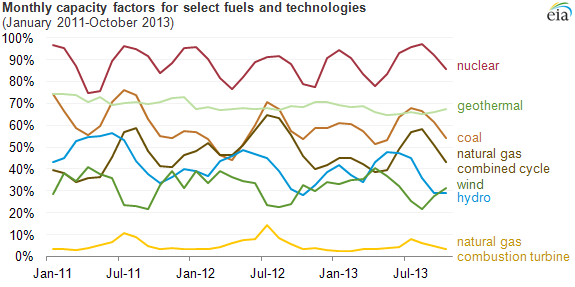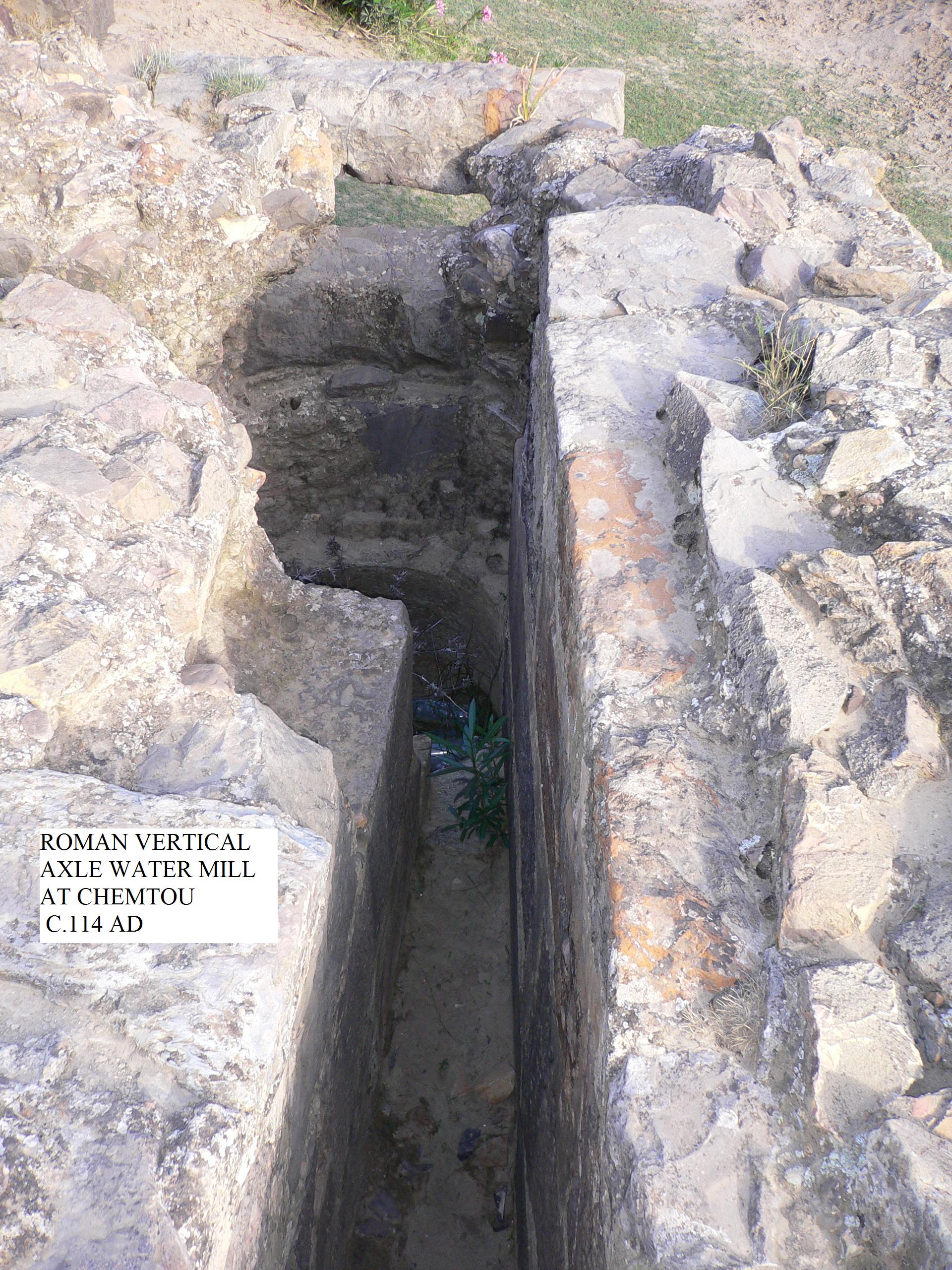|
Bicaz-Stejaru Hydro Power Plant
Dimitrie Leonida (Stejaru) Hydro Power Plant is a hydropower development on the Bistrița River, near Bicaz, Romania. The project was started and finished in the 1950s. It consists of a dam, a reservoir, and a hydro power plant. The dam is a reinforced concrete structure with a height of . It formed and holds the Bicaz Lake reservoir, also known as Mountain Spring Lake ("Lacul Izvorul Muntelui"). The reservoir is the largest artificial lake in Romania; it manages river levels downstream, provides fishing, attracts tourism, fuels the power plant, and controls flooding. The Oak Hydro-power plant ("Hidrocentrala Stejaru") is equipped with six turbines (four-27.5 MW and two-50 MW turbines) for a total installed capacity of 210 MW. The plant generates an average of 500 GWh of electricity per year, at a capacity factor of 30%; it has produced over 20 billion MWh of electricity in the first 50 years since commissioning. See also * Izvorul Muntelui Lake References External l ... [...More Info...] [...Related Items...] OR: [Wikipedia] [Google] [Baidu] |
Bistrița (Siret)
The Bistrița (; also called Bistrița Aurie or Bistrița Moldoveană; ) is a river in the Romanian regions of Maramureș, Bukovina and Moldavia (most of its length). It is a right tributary of the river Siret (river), Siret. At Chetriș, near Bacău, it flows into the Siret. Its source is in the Rodna Mountains, at the foot of the . It flows through the counties Bistrița-Năsăud County, Bistrița-Năsăud, Suceava County, Suceava, Neamț County, Neamț, and Bacău County, Bacău. The towns Vatra Dornei, Bicaz, Piatra Neamț, Roznov, Neamț, Roznov, Buhuși, and Bacău lie along the Bistrița. The Bistrița is long, and its basin area is . p. 13 [...More Info...] [...Related Items...] OR: [Wikipedia] [Google] [Baidu] |
Watt
The watt (symbol: W) is the unit of Power (physics), power or radiant flux in the International System of Units (SI), equal to 1 joule per second or 1 kg⋅m2⋅s−3. It is used to quantification (science), quantify the rate of Work (physics), energy transfer. The watt is named in honor of James Watt (1736–1819), an 18th-century Scottish people, Scottish inventor, mechanical engineer, and chemist who improved the Newcomen engine with his own Watt steam engine, steam engine in 1776, which became fundamental for the Industrial Revolution. Overview When an object's velocity is held constant at one meter per second against a constant opposing force of one Newton (unit), newton, the rate at which Work (physics), work is done is one watt. \mathrm. In terms of electromagnetism, one watt is the rate at which electrical work is performed when a current of one ampere (A) flows across an electrical potential difference of one volt (V), meaning the watt is equivalent to the vo ... [...More Info...] [...Related Items...] OR: [Wikipedia] [Google] [Baidu] |
Dams In Romania
This is a list of dams and reservoirs in Romania. References {{Europe topic, List of dams and reservoirs in Romania Romania is a country located at the crossroads of Central Europe, Central, Eastern Europe, Eastern and Southeast Europe. It borders Ukraine to the north and east, Hungary to the west, Serbia to the southwest, Bulgaria to the south, Moldova to ... * Dams Dams * ... [...More Info...] [...Related Items...] OR: [Wikipedia] [Google] [Baidu] |
Hidroelectrica
Hidroelectrica is a leader in electricity production and the main provider of technological services required in the National Energy System in Romania. The company is currently managed in a dual system, by a Management Board, under the supervision of a Supervisory Board. History The successor to the Ministry of Electricity, RENEL, was founded in 1990 The Romanian Energy sector was reorganized in 1998, by creating (in compliance with GD 365), a holding company, :ro:CONEL, CONEL, with four subsidiaries: Termoelectrica, Electrica, Hidroelectrica, Nuclearelectrica. In 2000, these four companies became, in compliance with GD 627, fully state-owned companies. Additionally, Transelectrica was also created In 2001, a strategy for the development and modernization of the energy system is drawn up, Hidroelectrica included, with the main purpose of attracting private capital to complete the investments initiated A reorganization process follows in 2002 for Hidroelectrica, completed wit ... [...More Info...] [...Related Items...] OR: [Wikipedia] [Google] [Baidu] |
Capacity Factor
The net capacity factor is the unitless ratio of actual electrical energy output over a given period of time to the theoretical maximum electrical energy output over that period. The theoretical maximum energy output of a given installation is defined as that due to its continuous operation at full nameplate capacity over the relevant period. The capacity factor can be calculated for any electricity producing installation, such as a fuel consuming power plant or one using renewable energy, such as wind, the sun or hydro-electric installations. The average capacity factor can also be defined for any class of such installations, and can be used to compare different types of electricity production. The actual energy output during that period and the capacity factor vary greatly depending on a range of factors. The capacity factor can never exceed the availability factor, or uptime during the period. Uptime can be reduced due to, for example, reliability issues and maintenance, schedul ... [...More Info...] [...Related Items...] OR: [Wikipedia] [Google] [Baidu] |
Nameplate Capacity
Nameplate capacity, also known as the rated capacity, nominal capacity, installed capacity, maximum effect or gross capacity, IAEA-PRIS is the intended full-load sustained output of a facility such as a ,Energy glossary '' Energy Information Administration''. Retrieved: 23 September 2010. [...More Info...] [...Related Items...] OR: [Wikipedia] [Google] [Baidu] |
Water Turbine
A water turbine is a rotary machine that converts kinetic energy and potential energy of water into mechanical work. Water turbines were developed in the 19th century and were widely used for industrial power prior to electrical grids. Now, they are mostly used for electric power generation. Water turbines are mostly found in dams to generate electric power from water potential energy. History Water wheels have been used for hundreds of years for industrial power. Their main shortcoming is size, which limits the flow rate and head (hydraulic), head that can be harnessed. The migration from water wheels to modern turbines took about one hundred years. Development occurred during the Industrial Revolution, using scientific principles and methods. They also made extensive use of new materials and manufacturing methods developed at the time. Swirl The word turbine was introduced by the French engineer Claude Burdin in the early 19th century and is derived from the Greek w ... [...More Info...] [...Related Items...] OR: [Wikipedia] [Google] [Baidu] |
Concrete
Concrete is a composite material composed of aggregate bound together with a fluid cement that cures to a solid over time. It is the second-most-used substance (after water), the most–widely used building material, and the most-manufactured material in the world. When aggregate is mixed with dry Portland cement and water, the mixture forms a fluid slurry that can be poured and molded into shape. The cement reacts with the water through a process called hydration, which hardens it after several hours to form a solid matrix that binds the materials together into a durable stone-like material with various uses. This time allows concrete to not only be cast in forms, but also to have a variety of tooled processes performed. The hydration process is exothermic, which means that ambient temperature plays a significant role in how long it takes concrete to set. Often, additives (such as pozzolans or superplasticizers) are included in the mixture to improve the physical prop ... [...More Info...] [...Related Items...] OR: [Wikipedia] [Google] [Baidu] |
Bicaz
Bicaz () is a town in Neamț County, Western Moldavia, Romania situated in the eastern Carpathian Mountains near the confluence of the Bicaz and Bistrița Rivers and near Lake Bicaz, an artificial lake formed by the Bicaz Dam on the Bistrița. Bicaz used to be a border town until 1918. Six villages are administered by the town: Capșa, Dodeni, Izvoru Alb, Izvoru Muntelui, Potoci, and Secu. Economy Before the construction of the dam (1950–1960) the settlement was just a mountain village in Eastern Carpathians where the main economic activity was timber harvesting. By tradition, the tree trunks were linked together, forming a raft (''pluta''); a raftman () used to drive the raft on the Bistrița river downstream to wood processing facilities in Piatra Neamț. Building the dam created also a horizontal industry: two cement and aggregate plants were built in Bicaz proper and nearby Tașca. This, together with the construction of the Bicaz-Stejaru Hydroelectric Power Stat ... [...More Info...] [...Related Items...] OR: [Wikipedia] [Google] [Baidu] |
Reservoir
A reservoir (; ) is an enlarged lake behind a dam, usually built to water storage, store fresh water, often doubling for hydroelectric power generation. Reservoirs are created by controlling a watercourse that drains an existing body of water, interrupting a watercourse to form an Bay, embayment within it, excavating, or building any number of retaining walls or levees to enclose any area to store water. Types Dammed valleys Dammed reservoirs are artificial lakes created and controlled by a dam constructed across a valley and rely on the natural topography to provide most of the basin of the reservoir. These reservoirs can either be ''on-stream reservoirs'', which are located on the original streambed of the downstream river and are filled by stream, creeks, rivers or rainwater that surface runoff, runs off the surrounding forested catchments, or ''off-stream reservoirs'', which receive water diversion, diverted water from a nearby stream or aqueduct (water supply), aq ... [...More Info...] [...Related Items...] OR: [Wikipedia] [Google] [Baidu] |
Hydro Power Plant
Hydroelectricity, or hydroelectric power, is electricity generated from hydropower (water power). Hydropower supplies 15% of the world's electricity, almost 4,210 TWh in 2023, which is more than all other renewable sources combined and also more than nuclear power. Hydropower can provide large amounts of low-carbon electricity on demand, making it a key element for creating secure and clean electricity supply systems. A hydroelectric power station that has a dam and reservoir is a flexible source, since the amount of electricity produced can be increased or decreased in seconds or minutes in response to varying electricity demand. Once a hydroelectric complex is constructed, it produces no direct waste, and almost always emits considerably less greenhouse gas than fossil fuel-powered energy plants. [...More Info...] [...Related Items...] OR: [Wikipedia] [Google] [Baidu] |





